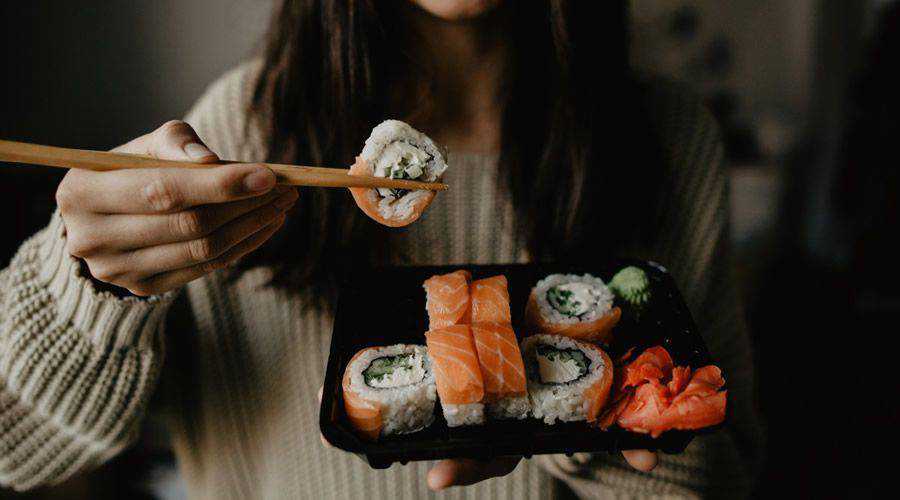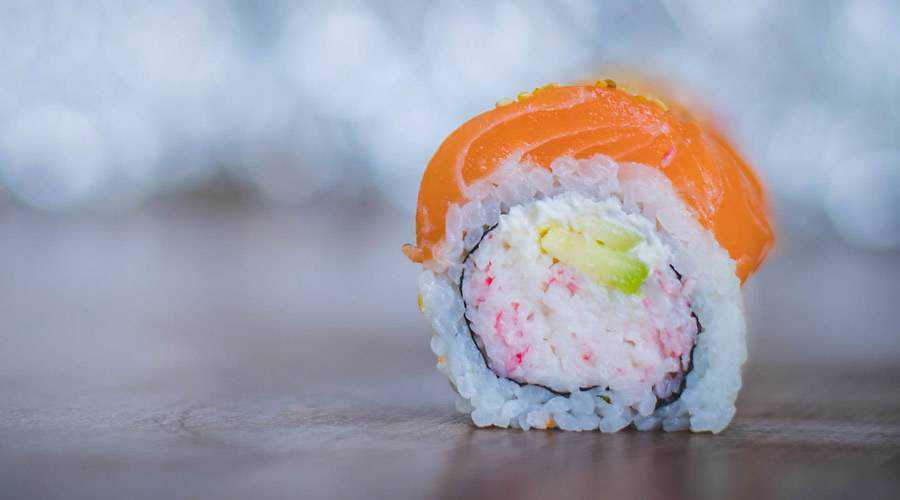Sushi has been popular in the Western world since the 1970s, when it was introduced to diners in the U.S. You probably have a strong opinion about it – either you love it and are always looking for ‘the best’ sushi in your neighborhood, or you absolutely hate it and can’t understand how anyone could go near it, much less put it in their mouths.
Personally, I’m in the ‘love it’ camp, and today I’m going to share with you six ways that you can leverage the power of sushi to improve your designs. Yes, really!
1. Tell a Story For Your Clients
Traditional sushi chefs in Japan are known for chatting with their customers at length about the local ingredients so essential to their cuisine. If you sit down at their restaurants, they will regale you with stories about the work they do, informing you and engaging you at the same time.
Restaurants are social environments – we go out to eat when we could easily stay in because we want to be around other people while we enjoy a (hopefully) delicious meal. People, like this guy, have since turned this traditional, sociable behavior into an international legend, comparing every sushi experience to the pleasant, informative one they had in Japan.
As a designer, you too can leverage this narrative power when you engage your clients. People respond well to storytelling – it makes you stand out from the pool of other designers who never use this tool.
Make sure you have a story to tell about your work. Do personal projects you love, and make a habit of explaining your unique and fascinating process to potential clients. They’ll definitely be interested as long as you keep it brief.

2. Simplicity is key
For many Japanese people, eating a little raw fish with rice is a complete meal. The story you tell with your work need not be complicated or overly dramatic. The more you simplify your process, the easier it will become, and the more work you’ll be able to accomplish.
Take writing this article, for example. If I hadn’t started out with a process to keep things simple, I would have spent far too long going into details that aren’t necessary to tell the story.
Simplifying your process isn’t easy, but once you develop your own system for tackling your work, it will definitely make your life much less hectic.
3. Uncover New Paths
Originally, the rice in sushi served a very specific purpose – to keep the fish preserved as it traveled from the fishing docks to the fish markets. To accomplish this, the rice was fermented and consequently had a very strong flavor that few could stomach.
It was traditionally discarded until the 18th century, when people began reducing the fermentation levels and including it as part of the actual dish. Now, sushi rice is the most common ingredient in most types of sushi. Making the rice part of the flavor profile opened up a whole new range of possibilities for flavor combinations.
Coming up with a function, or a solution to a problem you didn’t even know was there is a crucial part of design. Imagine if chefs still threw away their sushi rice before they served you your meal. We’d be missing out on so many different types of delicious sushi – nigiri, temaki, gunkan, and all those delicious rolls we Westerners love. How sad would that be? Good thing someone figured out how to prevent this tragedy from happening.
As a designer, your job is to navigate uncharted territory, making use of things that others miss or overlook. Have a bunch of throw-away supplies, research, or junk mail staring you in the face? Look at it again with new eyes and see if you can’t create a ‘sushi rice’ moment of your own.

4. Details, Details
Because they work with raw fish, which can contain harmful microorganisms, professional sushi chefs are specially trained to pay attention to certain characteristics of the fish that most commercial inspectors don’t bother with. Things like the smell of the fish, its color, firmness, and sterility are examined much more closely to ensure a safe dining experience for their patrons.
Designers can learn a lot from this ultra-specific attention to detail. As you are a decision maker, expected to come up with solutions to your clients’ problems before they even realize the problems are there, you need to learn how to think like a sushi chef and closely examine your designs for tiny flaws that others might not see.
Be relentless; weed out whatever doesn’t belong and don’t be satisfied until you’re sure you can present your clients with the absolute highest quality designs you can possibly create. This does two things: one, it puts more awesome design in the world (and who doesn’t need more of that?), and two, it signals to your client that you are different from all the other average designers out there who just turn in work that’s ‘good enough.’
5. It’s All About the Presentation
The reasons for inspecting sushi and sashimi ingredients aren’t all dire and health-related. Fish used for sushi and sashimi is also inspected for its visual appeal. Only the most attractive and flavorful cuts of fish are used, and great care is taken to make sure the beauty of the fish is retained once it arrives on your plate.
More creative chefs have signature styles of presenting their sushi – things that make their dishes unique to them and which inspire a mythology among their customers. Does that remind you of anything? Sushi is definitely a designed product, from inspection to presentation.
In fact, I can’t think of another traditional food that incorporates more conscious design into every aspect of its creation than sushi. Everything from the way sushi chefs select their ingredients, to the way they proudly tell you about them at the restaurant is a carefully orchestrated production – almost a performance.
You can definitely harness this process for yourself in your design work, and create a similar production experience for your clients and your users. When you develop your own unique production style, clients and users will take notice, and your work will take on a life of its own in the stories people will tell each other about it.
You want those stories – that mythology – to take root. It’s the single most important part of your reputation as a designer. What people say about your designs, and how they say it, is vital to getting the best clients. Plus, you can actually influence people’s opinion of your work based on they mythology surrounding it.
People are more likely to respond positively to design that has a good mythology, than to design that has little to no mythology.

6. Juxtaposition: the ‘Secret Sauce’
In the West, we don’t really pair unremarkable cereal staples with other, much more flavorful dishes. Except for pasta, which, of course, comes from Asia and is traditionally made from…rice. Go figure. But in Asia, chefs and cooks do this all the time. Rice is used as a palate cleanser and a kind of ‘shock absorber’ for the spicy and flavorful foods it normally accompanies.
Sushi is no exception. I suspect the reason Japanese cooks began including rice in their sushi dishes was that they wanted to experiment with different types of flavors for the fish – flavors that would be a bit too strong if consumed by themselves, without the rice as a ‘buffer.’
When you employ this practice in your designs, you are having the same effect on people’s eyes and brains that sushi has on their palates. Simplicity paired with tiny moments of intense detail or “flavor” is a philosophy you can use to create designs that are intriguing and unexpected.
How else can you draw design inspiration from sushi? Could you really, really go for a Hawaiian roll right about now? I know I could…
Related Topics
Top